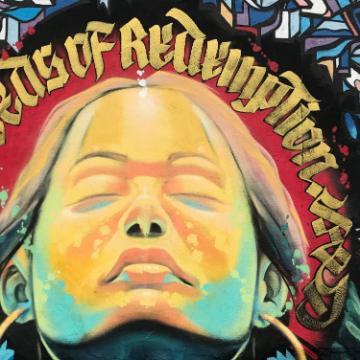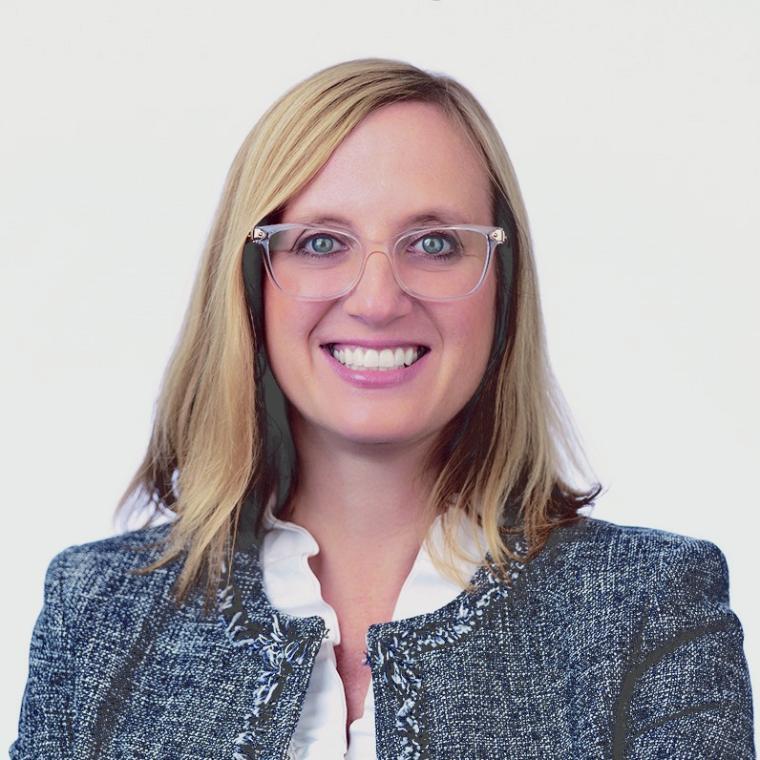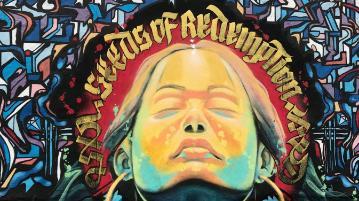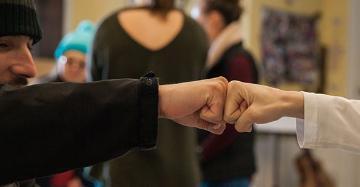
Cura Personalis and the Entrepreneurs' Law Clinic: Radically Student-Centered

By Laura Norris
Founding director of Santa Clara Law’s innovative Tech Edge J.D. Program and Entrepreneurs’ Law Clinic
Co-Director of the High Tech Law Institute
I teach at a Jesuit university, but in a seemingly non-Jesuit discipline at the intersection of law, business, and technology. Up until this most recent academic year, I had accepted that my station was on the outskirts of Jesuit principles such as social justice, assuming that being at a Jesuit university had no material connection to my work. However, through the Bannan Faculty Fellowship, I have come to the realization that my work does intersect with the Jesuit tradition of higher education, and that my teaching encompasses all five “hooks,” or goals, of a Jesuit university.
Before I joined the faculty at Santa Clara Law in 2013, my working career had been focused on helping to keep the Silicon Valley tech engine working. As an enthusiastic new engineering graduate from the Midwest, I moved to Silicon Valley to work in high tech. Within a couple of years I entered the evening J.D. program at Santa Clara Law. The education I received was outstanding, as Santa Clara Law had a wide variety of intellectual property courses that prepared me well for my desired career as a patent attorney. However, the Jesuit perspective was completely lost on me at the time. My memories of those years in law school consisted mostly of grinding through rush-hour traffic at 5 p.m., driving in circles to find street parking, grabbing junk food at the 7-Eleven, and running across campus to barely make it in my seat by the time the 6 p.m. class started. When we night students finished our classes each evening, it was dark outside and we were all exhausted, jumping into our cars to go home and get some sleep before getting up at 6 a.m. for work the next day. Not the reflective and thoughtful education I had expected of law school. On the rare occasion that I was on campus in the middle of the day, I can remember wistfully observing groups of law students studying together in the student lounge or in the library, or throwing a frisbee around on the grass, seemingly without another care in the world. Certainly, during those days of swinging back and forth between work, school, and occasionally sleep, the Jesuit principles of the institution were lost in the commotion.
After graduation from law school, I continued on the hamster wheel that is Silicon Valley. I started as an intellectual property litigator, which I occasionally referred to as arguing with other lawyers in order to move money from one big company to another. When I became pregnant with my first son, I went in house at a public technology company, where I honed my business-plus legal perspective and focused on supporting the growth of profits and shareholder value. Having learned how to support a large global organization in its quest for greatness, I gave up my
corporate spot, hung out a shingle, and started helping smaller companies in their quests for up-and-to-the-right revenue.

After 16 years of being in the trenches of Silicon Valley—in the board rooms, around the conference tables, in the cubicles, and more recently at the openplan workstation with noise-cancelling headphones—I took a detour in 2013. Without a real expectation it would lead somewhere, I applied to an open job requisition at Santa Clara Law. Much to my surprise, I landed my dream job as an academic at Santa Clara Law, creating and teaching in its first Entrepreneurs’ Law Clinic (ELC).
This position has offered me the opportunity to be reflective and thoughtful about my work and what it means to me and to my community. Finally, I am able to immerse myself in Santa Clara University’s campus and the rich diversity of thought in pursuit of excellence, recapturing some of what I missed as a harried night student. I have the freedom to explore the principles underlying Jesuit higher education, one of the key attributes that makes Santa Clara Law the special place that it is. For the first several years on the faculty, I attempted to learn about the principles of a Jesuit education through observation of my colleagues. In doing so, I concluded early on that there was not much of an intersection between my work and those principles. In law school, most often the concept of Jesuit values is equated with social justice. After all, our Center for Social Justice is a flagship program of the school that places graduates in public service positions in Silicon Valley and across the country. I have heard my colleagues use the phrase “Jesuit values” as a shorthand for concepts such as ethics, empathy, compassion, and justice. Worthwhile foci for any law student or faculty, but these concepts are so unspecific and intangible, I find them hard to grasp—let alone implement.
My feelings of being on the periphery were reinforced as I became more involved in the nationwide community of clinical faculty. When I attended the first Conference on Clinical Legal Education of the American Association of Law Schools as a new clinical faculty member, I was excited to connect with clinicians from around the country and gain some valuable tools for the classroom. However, when perusing the agenda, I found it hard to decide where to go. The agenda was rich with topics focusing on racial bias, human rights, and access to justice. It was hard to map a topic like “counseling a client in trauma” with the hopeful entrepreneur intake meetings my students were preparing for. In my working group with fellow business and transactional clinicians, I found out that even there the entrepreneurial clinics were viewed with skepticism by social justice–minded clinicians. One of the clinic directors from a decades-old community economic development clinic challenged whether entrepreneurial law clinics should exist at all. In that clinician’s view, the sole purpose of a legal clinic was to provide aid to the indigent. Even within the group of my closest peers, the transactional clinical faculty, there was an “us versus them” mentality between clinics that focused exclusively on low-income clients, and those with more relaxed intake policies.
My limited and blurred comprehension of Jesuit values, based entirely on observation, was that they were almost entirely incongruent with the ELC. After all, the clinic does not require financial screening for admission as a client, nor limit its clientele to only social businesses or nonprofits. Some of the ventures we serve are consumerist, perhaps even opportunistic. In many ways we appear to be the square peg of the law clinic world, and of the Jesuit mission.

Of course, intellectually I know that to be untrue. Economic growth through small business fuels jobs and economic empowerment. Entrepreneurism and the growth of small business can be an effective tool for transforming lives. The clientele that ELC serve are not savvy and wealthy startups that would automatically get access to the well-known startup law firms of Silicon Valley. We help hopeful entrepreneurs, principled nonprofit activists, and displaced workers looking to get back on their feet. We provide access to legal services that otherwise would be unavailable—and thus sidestepped altogether. It is true that there is a plethora of pro bono organizations in the Bay Area that connect volunteer lawyers to indigent clients. However, for these clients to obtain legal services, they often must submit themselves to “means testing”: an inspection of their household income to determine whether they are “indigent.” This process may seem intimidating or intrusive to entrepreneurs. It also doesn’t accurately reflect a population in Silicon Valley that may not be indigent under the strict legal definition, but nonetheless lacks economic resources to obtain legal representation. The test for indigence is typically 125% or less of the federal poverty level1, which at the time of this writing is $15,950 for a one-person household and $21,550 for a two-person household. In Silicon Valley, where the 2019 median home price was $1.12 million and median apartment rent was $3,028 a month ($36,336 a year2), there are many Silicon Valley cash-constrained entrepreneurs who make too much money to qualify for free legal help. The ELC fills this gap, helping entrepreneurs set up their companies and avoid legal mistakes in their earliest days.
Despite my conviction about the ELC’s role in empowering the underrepresented, I was apprehensive about becoming a Bannan Faculty Fellow for the 2019–2020 school year. My charge as a Bannan Faculty Fellow was to spend the school year focusing on the intersection of my work at Santa Clara Law and the Ignatian tradition and educational mission. I found myself doubting the credibility and depth of the intersection between value creation in a business context and justice in a theological context.
My gut reaction was to focus my efforts on better understanding the entrepreneurial clientele served by the clinic. Since its inception, the ELC has served over 300 clients and counseled at least 100 more entrepreneurs through workshops and advice clinics. A deep dive into our past files would surely produce some valuable insight into the impact the ELC has made on our community in alignment with the core Jesuit value of compassionate service to others.
However, upon reading a convocation address to Santa Clara University students, I was struck by an eloquent phrase by Fr. Ignacio Ellacuría, explaining the choice of the Jesuit order to focus on promoting justice through the provision of education to the community:
“A Christian university must take into account theGospel preference for the poor. This does not mean that only the poor study at the university; it does not mean that the university should abdicate its mission of academic excellence—excellence needed in order to solve complex social problems. It does mean that the university should be present intellectually where it is needed: to provide science for those who have no science; to provide skills for the unskilled; to be a voice for those who do not possess the academic qualifications to promote and legitimate their rights.”3
To “provide skills for the unskilled.” That is my mission as a clinician. While there are some clinics that are primarily structured to focus on directly providing services to community members, my clinic is different. When I joined Santa Clara Law to start this clinic, I decided from day one that I would structure the clinic to focus on the students, to ensure that the student associates leave the clinic with more skills and opportunities than when they started. My passion for teaching as a clinician comes from how I can impact the students. I am imparting skills upon them that will help them to become more empathetic, collaborative problem-solvers for their clients. The students completing the clinic will possess new skills that will transfer well to the workplaces of Silicon Valley, but will also help them to become better friends, neighbors, and citizens.
Another Jesuit writing helped to reinforce this belief that my clinical students were receiving an education consistent with Jesuit principles of cura personalis in higher education. The multifaceted, skill-centric curriculum of ELC embodies the “five hooks” fashioned by Rev. John W. O’Malley:
“I have created five hooks or pegs or slogans or bullet points on which to hang the basic goals that I believe capture aspects of the tradition that are as valid now as they ever were and that express what the tradition wants to accomplish, especially in its incarnation in Jesuit schools. We can look upon them as constituting a profile of the ‘ideal graduate’ according to the humanistic tradition. The five hooks are: (1) The Fly in the Bottle, (2) Heritage and Perspectives, (3) Not Born for Ourselves Alone, (4) Eloquentia perfecta, or “The Art of the Word,” and (5) The Spirit of Finesse.”4
Students who have successfully completed the ELC will have confronted these five hooks making up the Jesuit tradition. Significantly, the students in the ELC work on confronting the first of O’Malley’s hooks, the Fly in the Bottle: freeing themselves of their built-in constraints while approaching a legal project. This is no small feat for a law student. The traditional legal education is undertaken through reading of historical cases that were not only so egregious so as to result in litigation, but were so hotly contested that they were appealed, relitigated, and sometimes legislated. Through no fault of their own, law students can become programmed to view the world cynically, counseling clients through a lens that the next lawsuit is right around the corner. For many fields of the law this risk-averse attitude is invaluable. But not so for entrepreneurs. Entrepreneurs are risk takers by nature and are well served by a lawyer who thinks outside the box. So in the ELC, students are taught to think holistically about a client’s problems, viewing legal issues as opportunities for innovation. The entrepreneur’s lawyer needs to emerge from the constraints of the “bottle” making up the traditional legal mindset.
O’Malley explains that the second hook, the study of our Heritage and Perspective, is an essential component to self-understanding. Like many other courses in the law school, ELC students will vigorously study Heritage and Perspective, as our legal system in the United States is based upon the common law of England, a system by which our laws are constructed bit-by-bit with each new case decision through judicial precedent. Work in a law school clinic reinforces the third hook, that we are Not Born for Ourselves Alone, as the clinical students are put to work for real-life clients to solve real-life problems with time urgency. The study of hook four, Eloquenta Perfecta (or perfect eloquence), is necessary to be a lawyer in virtually every field— reinforced from the first to the last day of students’ law school education and also vitally important in a clinic like the ELC. The ELC students continuously practice the fifth hook, the Spirit of Finesse, where “in the murky darkness of human interaction and motivation two plus two does not equal four.”5 One of the most important skills of a lawyer involves the ability to see the multiple truths that can exist at one time given a certain set of facts. Although O’Malley intended these five hooks to explain the Jesuit educational tradition as a whole, they apply equally to the student-centered experience in the ELC.
Focusing on honing the students’ competencies beyond those traditionally found in doctrinal legal education is grounded in the Jesuit concept of cura personalis: the tradition of caring for the whole person in a “radically student-centered” education.6 The ELC assesses students’ performance in the clinic via seven key competencies. As would be expected, we assess the students’ skills in predictable areas such as research, writing, legal knowledge, and legal analysis. But more importantly, we also assess the students’ performance in employing creative problem-solving, interpersonal skills, and initiative. These last three competencies are applicable not only to serving the entrepreneurial client, but also to living the best life. Wherever these individuals end up after graduation, they can call upon these abilities to change a frustration into a solution, assemble a team to scale it, and drive it to completion.
Building on the early successes of the ELC and its focus on cura personalis, I expanded my role to be the inaugural director of a skill-based J.D. certificate program founded in 2018, whereby students wanting to work with technology businesses build upon a skill portfolio while taking traditional law school classes. This program, the Tech Edge J.D. program, was designed to make students more practice-ready when they complete their law degree. It provides mentorship by practicing professionals; personalized academic advising by faculty; career planning; and skill development through extracurricular activities, externships, and practical coursework. It embodies cura personalis, in that each student crafts his or her personal career plan after reflection on their beliefs and attitudes about the purpose of work and the meaning of life. As the student progresses throughout their degree program, they fine-tune their personalized career plan and obtain the appropriate coursework and activities to position themselves for their desired role. The Tech Edge J.D. program has seen early successes, as it is a competitive admissions process that is attracting a high caliber of incoming students. In 2021, the first cohort of Tech Edge J.D. students will graduate from Santa Clara Law, and will be farther ahead on the learning curve than grads who took a more traditional pathway.
It’s probably not surprising that I chose a cura personalis–themed program for my Bannan Faculty Fellow event. My desire was to take this theme of preparing students through skill-building for the workforce one step further. This event focused on a collection of skills that are not traditionally taught in law school, but which are equally important in preparing students to be better citizens of the world.
The Cura Personalis Event engaged the students in exploring the unexpected links between the law school curricula and the Jesuit principle of caring for the whole person. The event was designed to focus on self-care, giving the students a break from the rigor of traditional law school education. The act of focusing on self-care for a day, in and of itself, would be beneficial to all aspects of their lives. However, this event would focus on self-care at the intersection of “life skills” and “legal skills” that are critical to their future professional success. To determine which life skills to feature at the event, I asked one of our law advisory boards, made up of practicing attorneys in the Silicon Valley, which life skills they value in an applicant and employee. Their top three: oral communication and presentation skills, self-awareness/self-reflection, and organizational skills/time management. These three skills were the subject of workshops at the Cura Personalis Event, along with networking, financial planning, and cooking. Pleasingly and surprisingly, the event was well-attended, during midterms, on a Sunday. Feedback forms revealed that students felt it was “well worth their time,” “very cool and informational,” and in fact, asked that this sort of program be incorporated into orientation or their first year of school. Students recognized the appeal of honing new competencies that apply equally in professional and personal contexts.
Following this event, I find myself reenergized in several ways. For the first time since joining the faculty in 2013, I appreciate the unique benefits of teaching at a Jesuit institution and understand my role in imparting Jesuit values on our students. I am motivated to hold more student-facing cura personalis events, where students are able to explore a wider variety of self-care skills to enrich their lives. Most importantly, I am inspired to incorporate less obvious concepts such as mindfulness, empathy, and organizational skills into my clinical teaching repertoire. With the abrupt onset of a global pandemic and transition to shelter-in-place learning, focusing on the whole student is even more important than before. Perhaps the next “life skills” event or module will include subjects such as improving your oncamera presence, conducting online study groups, and finding time for self-care during quarantine. Whether their focus is on public interest law, human rights, or business and technology law, Santa Clara Law graduates should embark on their post-law school lives possessing the traits to be good humans.
It was my desire to work in fast-moving technology companies that brought me to Silicon Valley. Once here, I dedicated the first half of my career to increasing shareholder value at those companies. But the second half of my career has been different. Through my faculty appointment at Santa Clara Law, and my Bannan Faculty Fellow appointment by the Ignatian Center for Jesuit Education, I have come to deeply understand cura personalis. My “radically” student-centered approach in preparing students to be high-tech lawyers is in fact at the heart of the Jesuit purpose of higher education: “to provide science for those who have no science; to provide skills for the unskilled; to be a voice for those who do not possess the academic qualifications to promote and legitimate their rights.”
LAURA NORRIS, J.D., ’97 is a founding director of Santa Clara Law’s innovative Tech Edge J.D. program and Entrepreneurs’ Law Clinic, co-director of the High Tech Law Institute, and an associate clinical professor. She teaches courses in startup law, intellectual property, and legal issues in technology companies. Norris worked in private practice representing technology startups and entrepreneurs. She gained her business acumen through her position as the first vice president of legal affairs and corporate secretary to the board of directors at Cypress Semiconductor Corporation. When she is not working with startups and students, Norris can be found in the pool or on local trails, training for her next triathlon.
NOTES
1 See, Cal. Bus. & Prof. Code §6213
2 “2020 Silicon Valley Index.” Joint Venture Silicon Valley, 2020, https://jointventure.org/download-the-2020-index. 80-84.
3 Ignacio Ellacuría, S.J., “The Task of a Christian University,” Convocation address at Santa Clara University, June 12, 1982; “Una universidad para el pueblo,” Diakonía 6:23 (1982), 41–57
4 John W. O’Malley, S.J., “Jesuit Schools and Humanities, Yesterday and Today.” Studies in the Spirituality of Jesuits, Spring 2015, 28–31
5 O’Malley, “Jesuit Schools and Humanities, Yesterday and Today,” 30.
6 O’Malley, “Jesuit Schools and Humanities, Yesterday and Today,” 12.